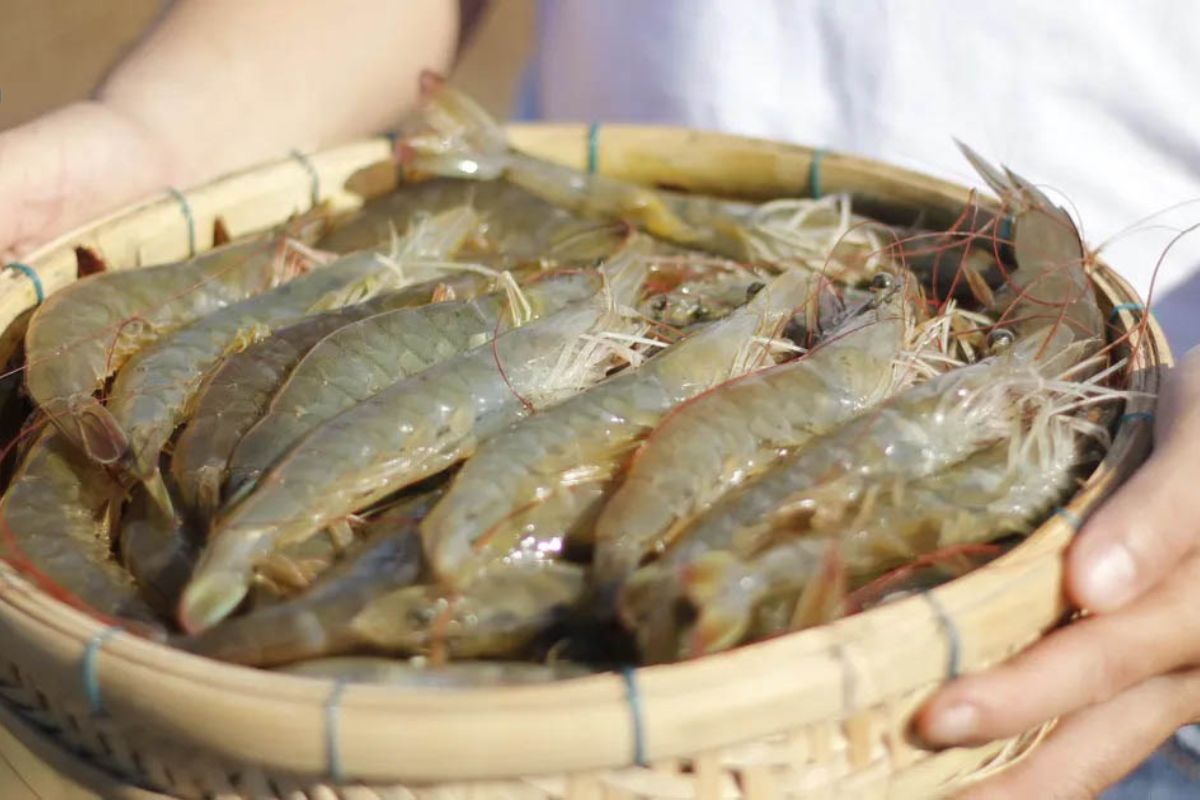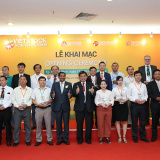Necessary mineral needs for molting shrimp
_1705031185_1705894935.jpg)
Minerals play an equally important role in the process of molting and forming new shells for shrimp. By ensuring the amount of minerals in the pond, it will help shrimp grow healthy and develop evenly, thereby ensuring shrimp yield at the end of the farming season!
How important are minerals for shrimp?
Molting is the process of shedding an old exoskeleton and regenerating new tissue, and occurs in most invertebrates, including crustaceans. This is an essential process for crustacean growth in the post-larval stages.
The molting cycle of shrimp includes post-molting, intermediate, pre-molting and molting stages. These stages may not be clearly distinguished in practice.
But the differences in shrimp behavior in different stages can be easily observed, for example shrimp eat more than usual and the water alkalinity may increase or decrease of water in the pond, etc.
Because the shrimp shell is formed mainly from minerals, the molting process entails a very high need for minerals.
Minerals are a very important ingredient in the shrimp’s body, helping the shrimp’s molting process happen easily. If the shrimps lack minerals, they will suffer from body curvature and a soft shell.
For high density white leg shrimp farming, minerals must be monitored, and supplementation needs to occur promptly. Supplementation can be used continuously throughout the farming season, especially during the rapid growth period of shrimp from 2 to 3 months old.
Shrimp’s mineral needs vary depending on the type of mineral. Crystalline minerals that can be dissolved in water in the form of ions are usually best absorbed. Other compounds exchange electrons with minerals to form stable, poorly soluble compounds that are difficult to absorb.
Supplementing minerals at the right time and in the right amount corresponding to each stage is very important.
Time it takes for shrimp to peel during the farming process
| Farming day | Number of times molted | Total number of times/month | Molting day interval | Shrimp body weight | Length (cm) | Size of baby shrimp/kg |
| 1-7 | 7 | 16-18 | 1 | 0.66 | 3.5 | 1500 |
| 8-15 | 4 | 16-18 | 2 | 1 | 4.7 | 1000 |
| 16-30 | 5 | 16-18 | 3 | 2 | 6.1 | 500 |
| 31-45 | 2 | 4-6 | 7 | 5 | 8.4 | 200 |
| 40-60 | 2 | 4-6 | 8 | 10 | 10.8 | 100 |
| 61-90 | 3 | 3-4 | 9 | 16 | 12.8 | 62.5 |
Because White-leg shrimp has a fast growth rate, molts continuously, and is raised according to a high-density intensive farming model, the need for minerals is very high. The higher the salinity of the water, the higher the available dissolved mineral content, and vice versa. At low salinity, the content of Ca, Mg, P, Na etc. in water is low, and shrimp absorbs minerals insufficiently.
Especially during the growth process, white shrimp need a lot of minerals, so white shrimp ponds should always maintain alkalinity of 100 mg/l or more, by using CaCO3 lime. It’s necessary to regularly add minerals to the pond to make the shrimp hard-shelled and easily molt, helping the shrimp grow quickly, and limiting the phenomena of muscle turbidity, body curvature, and soft shell.
The secret to properly supplementing minerals for farmed shrimp
 Commercial white leg shrimp. Photo: aquavet.vn
Commercial white leg shrimp. Photo: aquavet.vn
A good time to add minerals is around the afternoon or between 10:00 and 24:00, because shrimp will often molt at night.
When a shrimp molts, its need for oxygen doubles. After molting, the shrimp will begin to absorb minerals from its surrounding environment to regenerate the shell. The rate of mineral absorption is highest after about 2 - 4 hours.
When you see shrimp showing signs of prolonged soft shells and difficulty molting, it’s necessary to periodically sprinkle mineral powder into the pond at a dose of 1kg/100m3 of water with mineral water at a dose of 10ml/kg of food (2 times/day). This will overcome the issue of soft shells and difficulty molting.
Shrimp usually grow fastest at about 30 - 65 days of age. If shrimp grows slowly during this period, it means that the water lacks enough Ca and Mg to support the shrimp. Therefore, it is necessary to supplement mineral water by mixing it with food at a dose of 5ml/kg of food, 2 times/day.
New commitment drives Shrimp Aquaculture improvements in Vietnam
Minh Phu Seafood Corporation, the Monterey Bay Aquarium, SGS and the Asian Seafood Improvement Collaborative announced a major new comm
Thai shrimp production to drop 3%
Thai shrimp production is expected to drop by 3% this year, attributed to volatile weather, diseases, and unattractive shrimp prices.
Vietnam power price hike worries pangasius producers
Rising production costs are harming the competitiveness of Vietnamese seafood products, according to experts. These include the prices
The return of VIETSTOCK 2022 EXPO & FORUM
Informa Markets & Department of Livestock Production (MARD) has signed a Memorandum of Understanding (MoU) for a Strategic long-term Pa
VIETSTOCK EXPO & FORUM 2022 – The perfect business platform for you
VIETSTOCK EXPO & FORUM 2022 – The perfect business platform for you, serving the fast recovery of Indochina’s Feed, Livestock, Aquacult
Vietstock Expo & Forum 2022 is back in Ho Chi Minh city, Vietnam this October 2022
Vietstock Expo & Forum 2022, Vietnam’s Premier International Feed, Livestock & Meat Industry, expects to be the biggest show in Vietnam




_1660537278.jpg)
